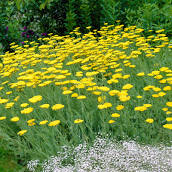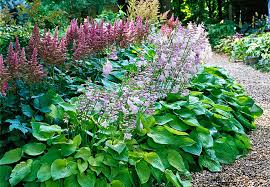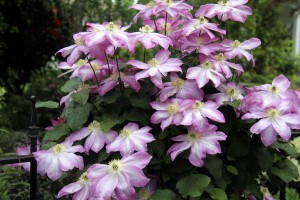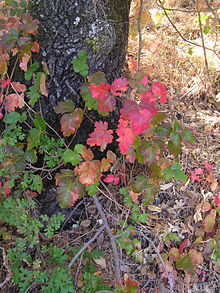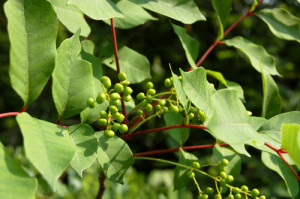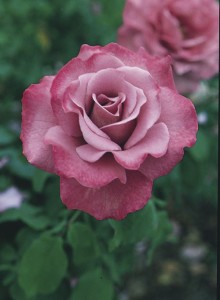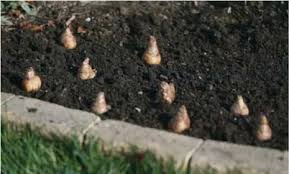INFORMATION ON ORCHIDS
ADDITIONAL INFORMATION
16 Ways to Use Vinegar in the Garden
FEBRUARY
By the looks of this title, there shouldn’t be much to write about or read, except maybe “start some seedlings indoors”. After all, those of us in the frigid northeast as this month’s “Tips” is being written, a snowstorm is bringing 6 to 12 inches of the fluffy white stuff to Bergen County. However, there is light at the end of the (dirt) tunnel where our perennials are slowly inching upward to the surface to help bring on a glorious spring. (It really is just around the corner.) The day before the snow arrived, President Eileen Avia at the WAGC February 8 meeting (and a 60-degree day) shared with members upcoming events to look forward to, such as this summer’s Garden Tour on June 11 (save the date) and to remind everyone how much fun gardening is, Master Gardener Janet Schulz’ “This & That in the Garden” presentation delivered to all a new-found gardening fervor for 2017. Janet’s “this and that” tips spanned how to find your buried bulbs, to composting advice to dividing plants. Here are just a few tips from her talk:
Yarrow Moonshine
Hosta
Dividing Plants
-
If you have about a 1-quart pot of planted hosta, let them mature for 3 to 5 years. Don’t divide them until they have had time to mature.
-
If you have a halo effect (i.e., yarrow Achillea millefolium or hosta family Asparagaceae) dig up the smallest ones and replant somewhere else. The other will eventually fill in.
-
Daylilies should be dug up, then shake the dirt from roots so you can see where they separate, then divide. Do this in the spring. Peonies and iris should be divided in the fall.
Grasses
-
Grasses are difficult to divide. Their roots are very deep. A hand shovel will not work; you need a mechanical device to divide them. Cut them back to as low as you can in the fall or keep them through winter if you like the look. But you will have to cut them down in the spring for new growth to emerge.
Climatis-asao
Vines
-
Climatis varieties such as Montana, Henri ii, and Betty Cornia all attract deer. There are over 300 species within this buttercup family Ranunculaceae. Spray them 2 or 3 times as they bloom and them once a month with Deer Stop. (It really works!)
Composting
-
Do not compost anything moldy. Clean up any mushy plants in the fall as they promote disease. The more you clean-up in the fall, the less you’ll need to do in the spring. Remember to prune your shrubs by hand! Composting Earth Machines are available for purchase through the Bergen CountyAuthority at www.bcua.org.
Bulbs
-
When you plant bulbs, bury a plastic spoon just above the surface so you can remember where they are in the spring especially when you are re-arranging plants.
-
Gloriosa daisies must be dug up in the fall. Put in pots until spring.
Pots
-
If you have pots that can be left outdoors in the winter, turn them on their sides to avoid water and ice build up. You can also decorate your pots for the holidays with greenery and even plastic flowers!
One more tip from Janet: Plant your flowers and potted plants in your backyard where you can enjoy them not just when you are outdoors, but also when you are inside and you can view them from your windows!
MARCH
ANNUAL SEEDLINGS: It’s still a bit early to plant anything outdoors. However annual poppies can be planted from seed in the garden in March. Barely cover the seeds with soil. You can throw the seeds and gently rake over them is one method that works for an informal look. They will self-sow and the offspring will certainly come up wherever they desire! By mid-March you should have your dahlias, dusty millers, petunias, scabiosa, and probably your impatiens and lobelias ready to go. Late March works for taller marigolds, salvia, and verbena. Water transplanted seedlings from the bottom, if possible. After transplanting, begin to fertilize seedlings with a diluted (1/3 concentration) solution of water soluble fertilizer for house plants. For annual flowers that have been kept indoors over the winter, begin to use a water soluble fertilizer for flowering plants, according to directions.
LAWNS: Yes, we all have them. Whether it’s acres of sprawling green carpet or less than an acre, your flower beds will look less terrific if your lawn isn’t up to par. Spring is for overseeing thin areas, filling in bare spots, and fixing ruts and damage from winter weather. When over-seeding, the seed needs to be in contact with the soil to germinate. Be sure to take a hard rake to the soil surfaces to stir things up. Grass seed does best if it is ever so slightly covered with soil … less than 1/4 inch. Sprinkle with water 2 to 3 times daily after planting, keeping the new lawn moist, until grass germinates. As it becomes established, water deeply and less often. Bluegrass (full sun and moist conditions) can take up to thirty days to germinate. Fescue (best for shade but not deep shade) comes up in seven to fourteen days and ryegrass arrives in just five to ten days. Ryegrass protects soil against erosion and keeps down weeds while waiting for the bluegrass to come up. Ask your local nursery which grass is best for your lawn … and don’t forget to put gas and oil in your lawnmower!
MAY–JUNE
If you have shaded areas in your yard (and hopefully you do because canopy trees are so important for the environment) here is a list of perennials that do well in the shade, and they bloom every year!

Jerusalem Sage
Phlomis fruticosa
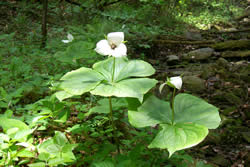
White Trillium
Trillium grandiflorum
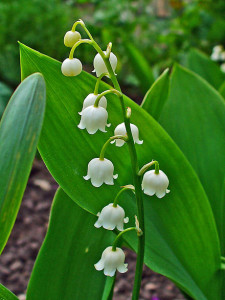
Lily of the Valley
Convallaria majalis
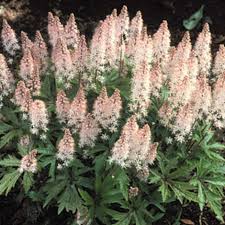
Foam Flower
Tiarella condifolia

Lenten Rose
Hellibore

Dead Nettle
Lamium maculatum

Columbine
Aquilegia
Find these shade plants at your local garden or nursery. If you are not familiar with any of the above, ask your local garden store personnel about them. They are all helpful and knowledgeable. Or, email the WAGC with your question!
JUNE
“Leaves of three, let them be.” While you are in the garden, and especially if you are clearing weeds from areas around trees or wooded areas, be aware of the poisonous plants that abound! In the northeast area, poison ivy grows just about everywhere. Keep your dog away from these plants as the irritant oil can transfer to humans. Although rare, dogs can also suffer after coming in contact with the plant, especially on the underbelly and inside the back legs. If you think your dog has come in contact with poison ivy, wear gloves and bathe your pet well to reduce contamination with this allergenic oil.
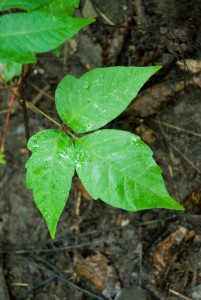
Poison Ivy: Poison ivy grows as a ground cover, a low shrub or even as a vine that scrambles up trees across most of the United States. The leaves start out solid green, in clusters of three per stem. They can be dull or glossy, and have pointed tips. Thin, aerial roots on the vines give them a fuzzy, or hairy, appearanceIn summer, the plants produce yellow-green flowers that are followed by whitish berries. By fall, the leaves become yellow and red. The Center for Disease Control (CDC) says that poison ivy grows across the U.S., except for California, Alaska and Hawaii.
Poison Oak: The leaves of this plant look a lot like oak leaves, and like poison ivy, they usually grow in clusters of three. But some kinds of poison oak have five, seven or nine leaves per cluster. Poison oak usually grows as a shrub in the Southeast or along the West Coast. It bears clusters of greenish yellow or white berries.
Poison Sumac: This plant likes to grow in swampy locations, and is often found along the Mississippi River or in boggy areas throughout the Southeast. It also breaks the rule that says, “Leaves of three, let it be,” because it typically has seven to 13 leaflets arranged in pairs. The leaves sometimes have black or dark brown spots that are filled with urushiol. In autumn, the leaves turn red, yellow and pinkish. Poison sumac typically grows into a woody shrub with glossy cream or pale yellow berries.
If You Find a Poisonous Plant: Once you’ve identified poison oak, poison ivy or poison sumac, you can pull them up if you are very careful to wear protective clothing, eyewear, gloves and shoes. But wash your clothes as soon as you’re finished, and rinse your washing machine thoroughly, to be sure all traces of the oil are removed. It’s easier to pull the plants when the soil is moist, but be aware that the plants will re-sprout from any root pieces that you miss. You can also spray the plants with an herbicide. Read and follow the manufacturer’s directions, and be careful not to get the spray on your desirable plants. You may have to spray more than once. And whatever you do, don’t burn any parts of these plants. The smoke can carry urushiol into your lungs and cause serious health problems. Even people standing downwind from burning plants may be at risk. Many other plants can be toxic to humans if ingested. While it’s unlikely that adults will try to eat or chew the following plants, it’s important to know they can be harmful and even fatal, particularly to children.
While this is not a complete list, use caution when growing or handling these common plants in your home and garden: Azalea, Bleeding heart, Common holly, Dumb cane, English ivy, Foxglove, Iris, Jasmine, Mistletoe, Narcissus, Oleander, & Philodendron. Plants can also poison pets and other animals. This is only a sample of plants that are toxic to them. Visit the ASPCA (Search poisonous plants) for more information: Aloe, Amaryllis, Begonia, Caladium, Corn plant, & Gardenia.
Source: Lynn Coulter; HGTV.com – Search Poisonous Plants
JULY – AUGUST
Great list from Dundee about deadheading perennials. Scroll to the bottom of the page to see a comprehensive list of common and latin names of flowers and plants.
AUTUMN
Fall is here and it’s time to prepare your gardens for the cold temps! Have a gardening question? Email us and we will provide the answer!
SEPTEMBER
Uh-oh, can it be true? Autumn is upon us. The calendar page has flipped to September. There’s no denying it. Fall is just a few weeks away as summer fades away. Whether you are a lover of hot humid summer days or ready for cooler temps and leaf-raking, this is a good time to regroup! This means assess your garden and look at what made you happy and what plants were less than stellar performers. If you think you can fix a problem, give it a second chance. It could be something simple. Make sure your sun-loving plant is still in the sun, and not in the shadows of another fast-growing plant or shrub. Speaking of the sun, potted roses can be planted early in the month in a sunny location. Remember the bulge from the graft needs to end up at ground level or just below (about 2 inches). You can also purchase roses now. As long as they are healthy there is no reason not to purchase that rose bush you always wanted! Here are a few tips about keeping your roses healthy through the winter months:
FERTILIZING ROSES: Fertilizing: If you are following the one-a-month approach, you will need to apply a diluted water-soluble fertilizer four weeks after your last application. If you are using the simplified method on the three-holidays, then your Labor Day application is due that weekend. Either way, September is your last fertilization until next spring.
PRUNING ROSES: Continue to remove suckers that pop up from below the graft, but stop removing faded blooms by late in the month. Part of growing dormant includes the development of the fruits. It is part of the natural life cycle of the plant. If you continue to prune away dead flowers, you will encourage new growth, rather than dormancy.
CONTROLLING PESTS: Japanese beetles are still feeding but not generally at the same rate as earlier in the summer. Handpicking is probably adequate for control. If the weather remains humid or rainy, you may want to apply one more fungicide treatment. If the plants have been healthy all summer, the removal of any newly infected leaves may be adequate. If plants are heavily infected, make sure you rake the fallen leaves and dispose of them in a plastic bag to prevent disease from getting a foothold for next spring. Read about dividing and pruning perennials below.
September Tree Planting

Planting techniques do not differ that much from spring plantings. However, after such a dry summer, you will likely have to deeply water very dry soil before you dig. Allow the water to run for several hours (on your designated watering day) at a trickle over the entire area that you want to dig. It’s best to do this the day before you are ready to plant. Trees for winter interest include the yellow-twig dogwood. After the leaves drop, you will appreciate the yellow twigs. Other suggestions for winter color are the corkscrew willow, weeping mulberry, and the “Heritage” river birch.
Be sure to stake everything. When you plant deciduous trees in September, they are in full leaf and so are more likely to be blow around on a windy day. Evergreen trees should be staked, especially if a hurricane or Nor’easter is forecasted. Newly planted tree roots do not have enough roots to stand up to high winds. Be sure your trees have time to make roots before soil temperatures drop below 45 degrees Fahrenheit. Don’t fertilize at planting. Don’t forget to ask for help! Many hands make for a straight tree planting!
September Perennials
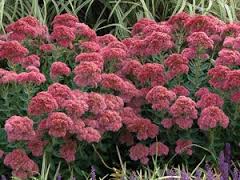
Time to regroup! What worked in your garden this year? What do you want to get rid of or what needs a good trimming? Poppies and peonies are best divided now. Daylilies are more flexible and can wait until spring. When dividing peonies, be sure to have at least 2 “eyes” or growing tips on each section of root. Soil preparation is important as peonies can be very happy in the same spot for fifty years without needing to be divided again. Water everything you move or divide so as not to dry out and perish after all the work you just did! You can fertilize perennials by incorporating granular 5-10-5 fertilizer into the soil along with your lime and organic matter. Do not toss fertilizer into the planting hole. It will rapidly burn the roots.
September Pruning
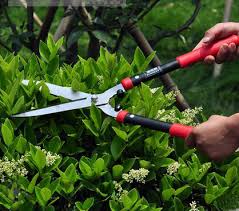
Cut back your peonies if they are yellow. Hostas usually look pitiful this time of year, so “Off with their heads!” Purple coneflowers will make flowers until frost, but they will make more flowers if you remove the seeds that are drawing energy from the flowers.
September Pests!
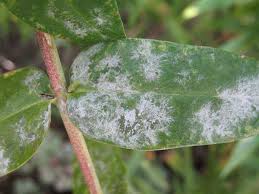
Powderly mildew can be found on phlox, black-eyed Susans, chrysanthemums, coral bells, and columbine, especially in humid weather. Cutting back the worst plants may slow the spread. An occasional spot on a leaf can be picked off. Dispose of diseased leaves in a plastic bag. Do not add them to compost as this is a source for the disease to spread to next season.
Text Source unless otherwise noted: Month-By-Month Gardening in New Jersey
By Pegi Ballister-Howells
Copyright © 2005 Pegi Ballister Howells
OCTOBER / EARLY NOVEMBER
Time to Plant a Spring Blooming Bouquet
by Janet Schulz
Now is the time to plant your spring blooming bulbs. Many gardeners do not want to plant bulbs for they do not want to put up with the dying foliage. Here is a great way to have color for almost two to three months in a small area. You will need about six late-blooming tulips, a few daffodils and at least 10 or 12 minor bulbs, such as crocus, grape hyacinths or chionodoxa, and a piece of chicken wire.
Dig a hole about 10-12 inches deep and scratch a handful of bulb fertilizer in the bottom. Place your tulip bulbs in the hole. No need to keep all the points up; those on their side will bloom two days later than those that are pointed up. Cover the tulip bulbs with soil. In the same hole place your daffodil and cover it with soil. Now your hole is almost filled so place your minor bulbs and cover. Place chicken wire over the filled hole and cover with mulch; water well. Come spring you will have a spring blooming bouquet. First, your minor bulbs will bloom followed by your daffodils and, finally, your tulips. All the foliage will be in one little area instead of spread over the garden. Knowing that deer do not eat daffodils, they may stay away from the tulips coming through the daffodil foliage.
Happy gardening! Note: Remember to water all the newly-planted bulbs immediately (and those in containers) to ensure good root development. Bulbs in containers do not need fertilizer. Soil preparation in your garden includes incorporation of 5-10-5 fertilizer at a rate of 2 pounds per 100 square feet. The incorporation of bone meal during soil prep provides nutrients.
October Leaf Peeping
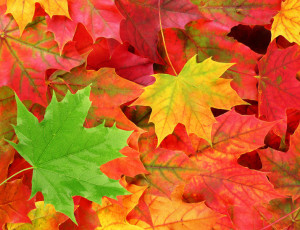
Plan a day during the third week of October and take a little sojourn around New Jersey, or just around your own neighborhood, as this is the week that leaves in New Jersey peak. Maples are famous for autumn color. Look for sugar maples and Japanese maples to display wonderful color. Seek also red oaks, dogwoods, and the American beech for splendid color. All red maples turn yellow and red, but did you know the variety October Glory is spectacular and was developed at Princeton Nurseries in New Jersey? After your leaf-peeping trip, it’s time to return to your own trees to fertilize! October is the month to fertilize deciduous shade trees. Feeding may be helpful now especially because of the dry summer and water restrictions.

